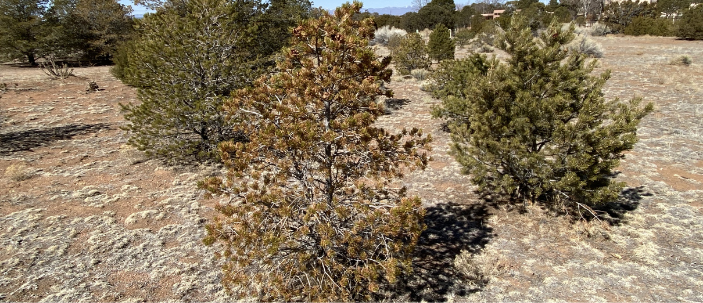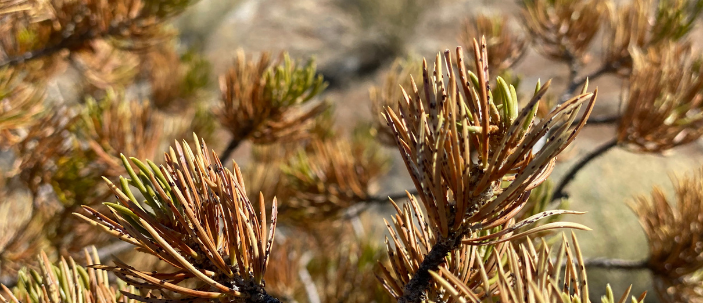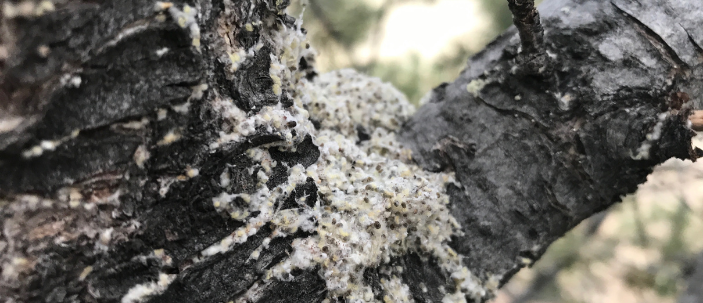
Piñon Needle Scale (Matsucoccus acalyptus)
March 1, 2021
By Head Gardener Linda Churchill
Piñon needle scale (PNS) is making a strong comeback around Santa Fe this year, with trees more susceptible because of the successive dry years we’ve experienced. If your piñon trees have an overall brown cast, look closely at the needles. If you see many tiny black bumps or “beans” stuck to the older needles, that’s a classic sign of PNS in its immobile phase, where the insect spends most of the year feeding on the leaf below. If most of the tree is brown except for the newest growth, with only green tips, the tree has had scale infection for successive years and may be at risk.

When the weather starts to warm between late February and early April, female scales emerge from their shells and males emerge from their pupae in the soil below the tree to mate. Eggs are then laid on tree trunks and the undersides of branches, covered by an obvious cottony webbing that looks a little like “dryer lint.”

If you start watching your piñon trees carefully in early spring you can control much of the annual PNS activity without chemicals. When you see the cottony masses appear on the trees, direct as forceful a spray of water as you can at the masses to hose them off the tree. After the dripping has stopped and the ground is no longer soaking wet, rake up whatever fell off the tree and dispose of it — don’t compost it. You are raking up eggs, adults and crawlers, but not all at any one go, so repeat this about once a week, or as soon as you see the cottony mass build up again, until this no longer happens.
If you can’t reach all your trees with a water spray or it’s otherwise not a workable solution, you can also control PNS with a number of chemical options. Most are best applied around this time of year before this season’s hatchlings have settled on your trees and created their impermeable waxy shells. Dormant oil can be fairly effective and is least toxic to the rest of the environment. If used early in the morning and early in the growing season, you’ll do the least collateral damage to other, beneficial insects.
You can significantly help your piñon trees by watering them occasionally, but deeply, during these drought years. A tree stressed by drought is more susceptible to PNS and to bark beetle infestation, which has even greater potential to kill piñons.
More information on PNS is available at this USDA site:


